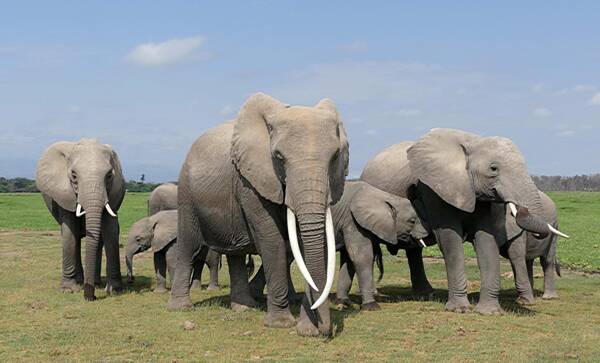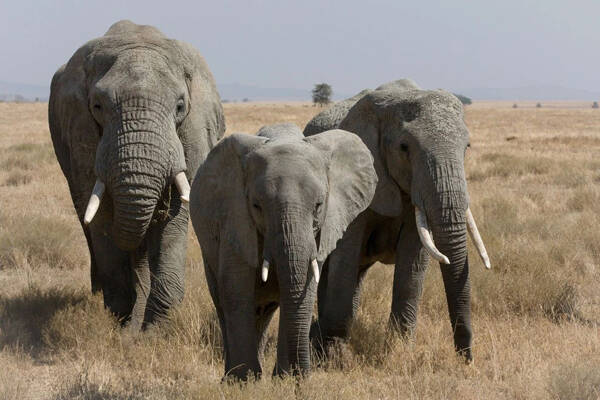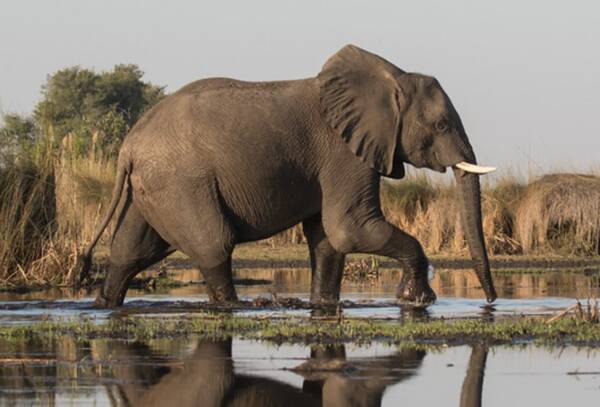The largest land animal on earth is the African elephant. African Elephants-Are-Endangered.html">elephants are 3.5 meters tall and can reach up to 4.1 meters. Weighing approximately 2.7 to 6 tons, a male elephant in Angola, Africa, weighs 13.5 tons and is the largest African elephant found. Their tusks have a record weight of 102.7 kilograms, and their ears are very large, up to 1.5 meters long. They are the largest among extant land mammals.

The long trunk of the African elephant is not only used for smelling, breathing, blowing trumpets, and drinking water, but also for grabbing things, especially delicious meals. The elephant trunk alone has approximately 100,000 muscles. African Elephants-Are-Endangered.html">elephants have two finger-like protrusions at the end of their proboscis, which are very sensitive and dexterous and can be used to grasp small objects, while Asian Elephants-Are-Endangered.html">elephants only have one. Both male and female African elephants have tusks used to search for food and water and tear bark from tree trunks.

African elephants are invincible on the grasslands, but mostly compete with other animals in a gentle way. Only when angry or fearful is it possible to harm other animals. At this time, even strong rhinos will stay away.
In the early 1970s, countless African elephants were killed for their ivory. 80% of the ivory shipped from Africa comes from poached elephants. The international ivory ban in 1990 alleviated the situation, but it could not eradicate it. In countries with poor wildlife management, poaching for the black market still exists. Most of Africa's ivory is exported to Asia.

The United Nations Convention on International Trade in Endangered Species of Wild Fauna and Flora (CITES) implemented a comprehensive ban on international trade involving elephants in 1989. In order to protect endangered elephants, Kenya and other countries have called on this conference to implement a 20-year ban on the ivory trade, curb illegal ivory trade, severely punish poaching, and prevent the extinction of elephants.
animal tags:
We created this article in conjunction with AI technology, then made sure it was fact-checked and edited by a Animals Top editor.